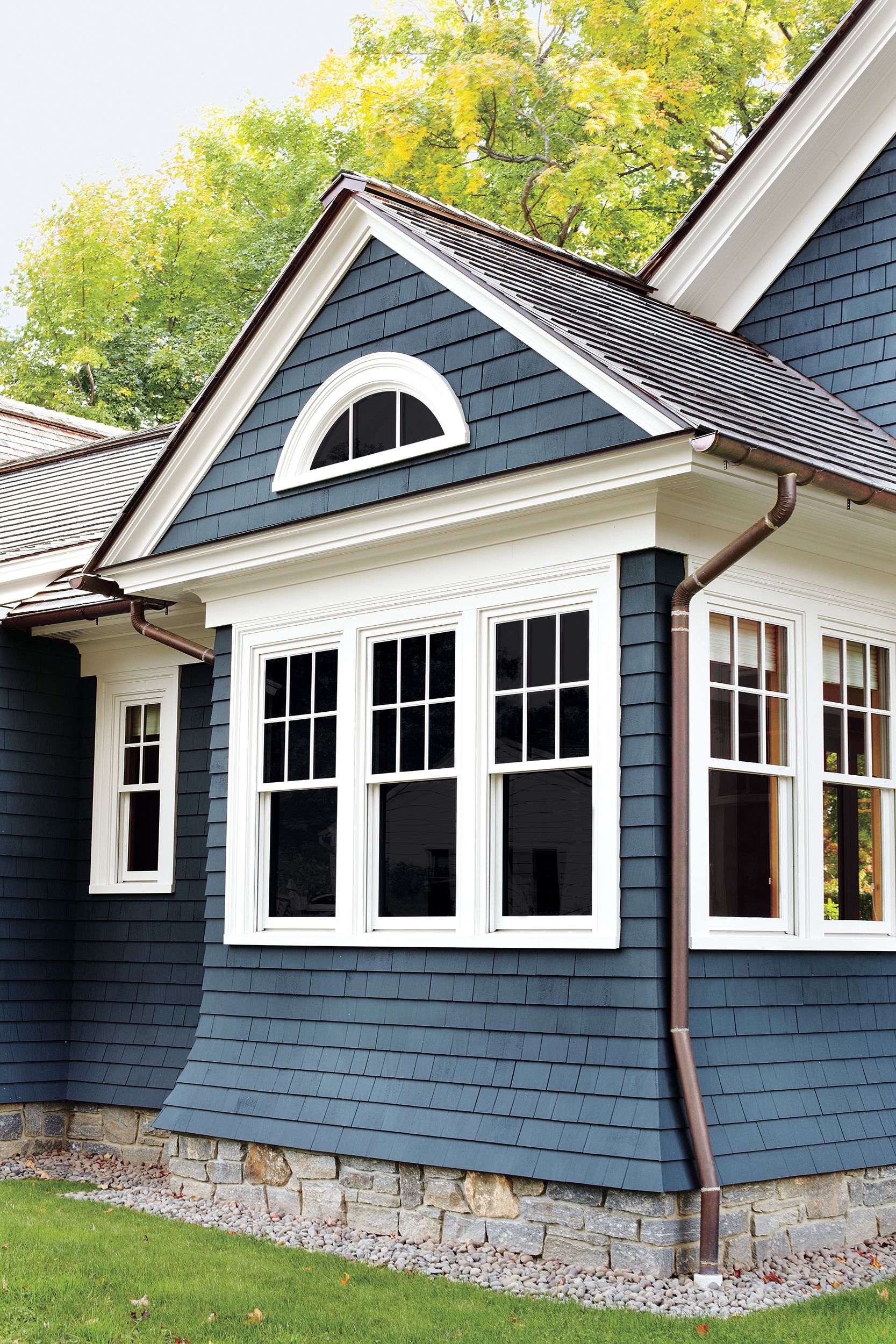
We provide you everything you need to know about how to select and maintain these unsung heroes of roof-water management.

An inch of rainfall doesn’t sound like much. But when it falls on an average-size roof, it can add up to a 1,900-gallon torrent sluicing off the eaves. That’s an awful lot of water, and it can cause an awful lot of damage if your gutters aren’t up to the task of controlling it.
Take a close look at your home’s gutters. If they’re old and in need of repair, it may be time to replace them. We’ll answer some common questions about gutters and offer some tips for hanging and maintaining them.
Before embarking on a gutter project, it’s a good idea to learn some of the vocabulary so you know the parts of a gutter system and what they do.
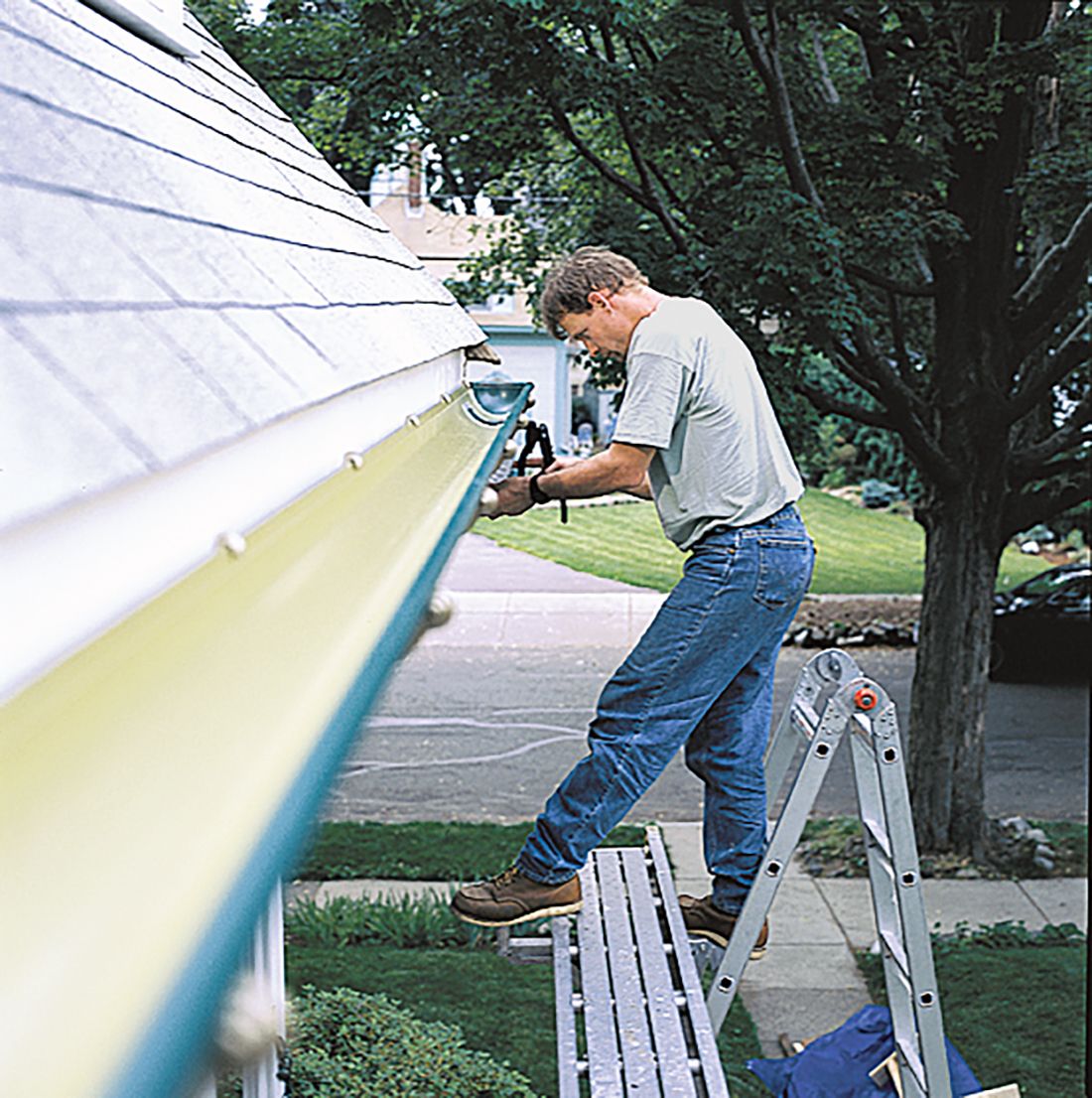
The biggest decision you’ll need to make when choosing a new gutter system is the material. Here’s a closer look at the materials used to make gutters, along with their pros, cons, and price points.
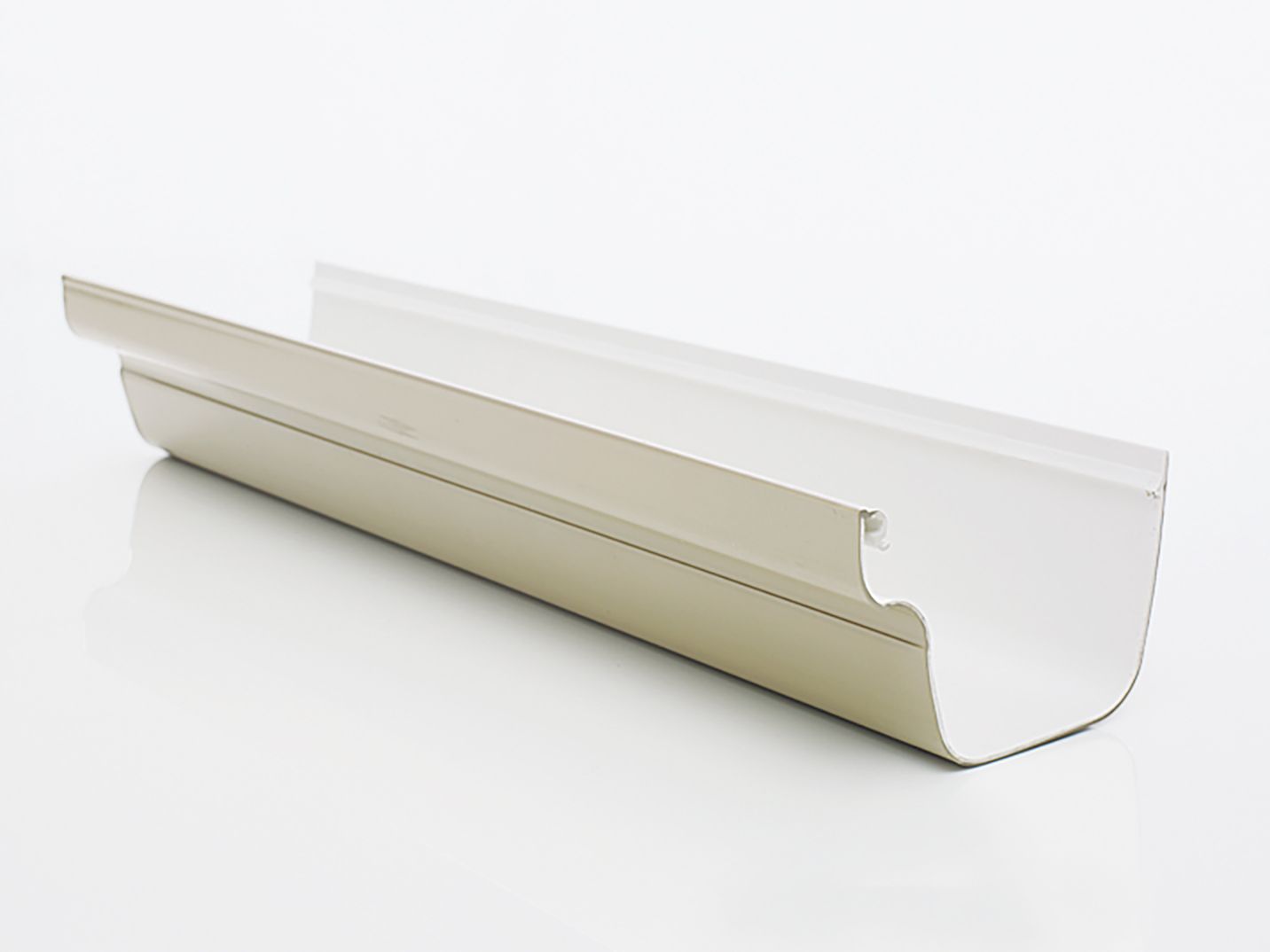
Vinyl is the least expensive, most DIY-friendly option because the sections just snap together. Your color choices are limited, although vinyl gutters can be painted.
Vinyl won’t rust or rot but becomes brittle in extreme cold and intense sun. It can also bend and bow under heavy rain, wind, and snow loads. Thus, vinyl gutters are best suited to mild climates, and they’re less durable than those made of other materials.
Cost: $11.92–$34.41 per foot*
*We calculated the cost information in this article using RSMeans data from Gordian.™ RSMeans is a construction cost database used by thousands of contractors to generate their project pricing.
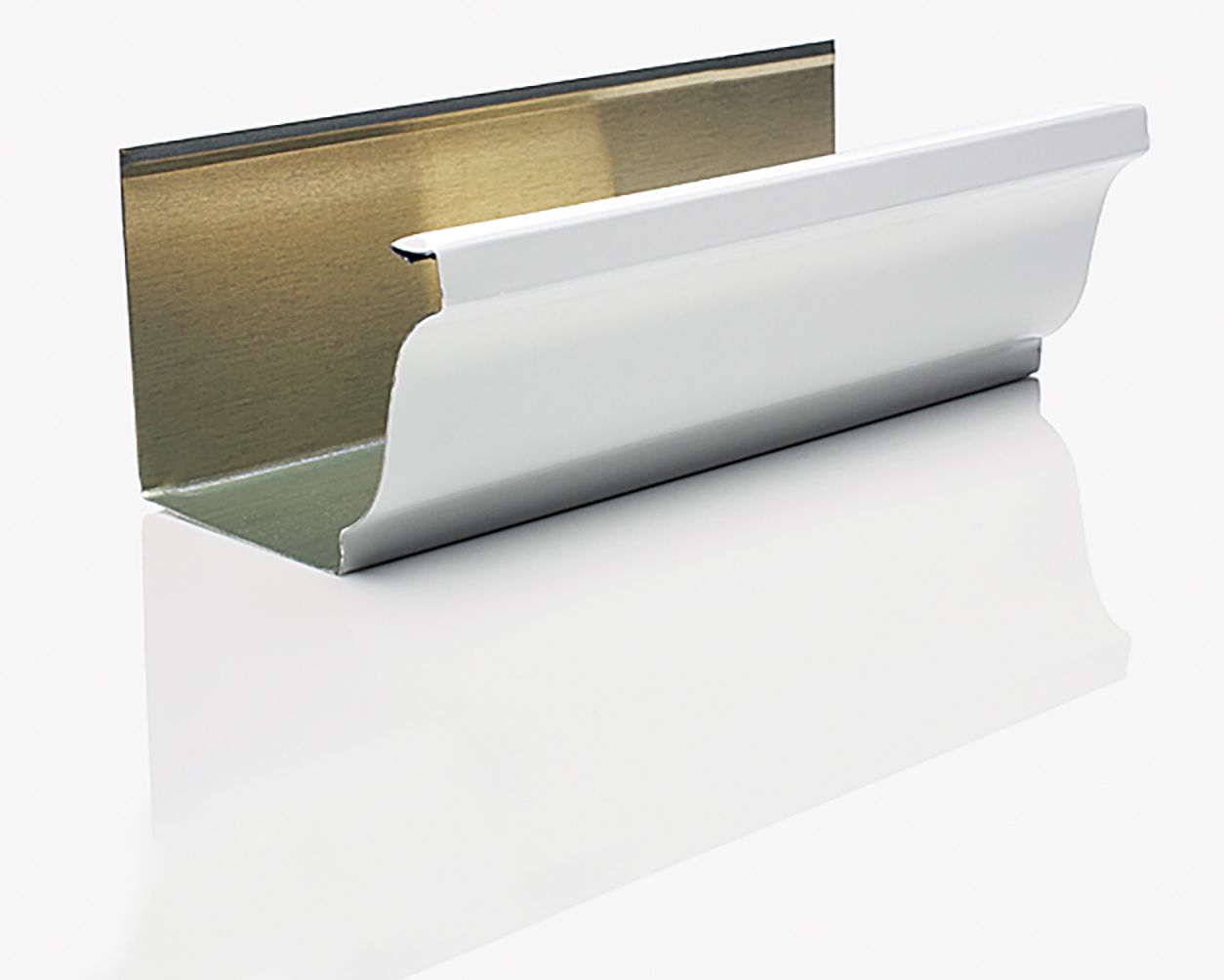
This popular, low-cost metal won’t rust and comes in an array of colors, including finishes that resemble aged copper and zinc. Aluminum gutters may be seamless or available in sections held together with rivets or screws and sealed with caulk. Lightweight aluminum is susceptible to denting and bending, but heavyweight aluminum lasts much longer.
Cost: $13.17–$34.52 per foot
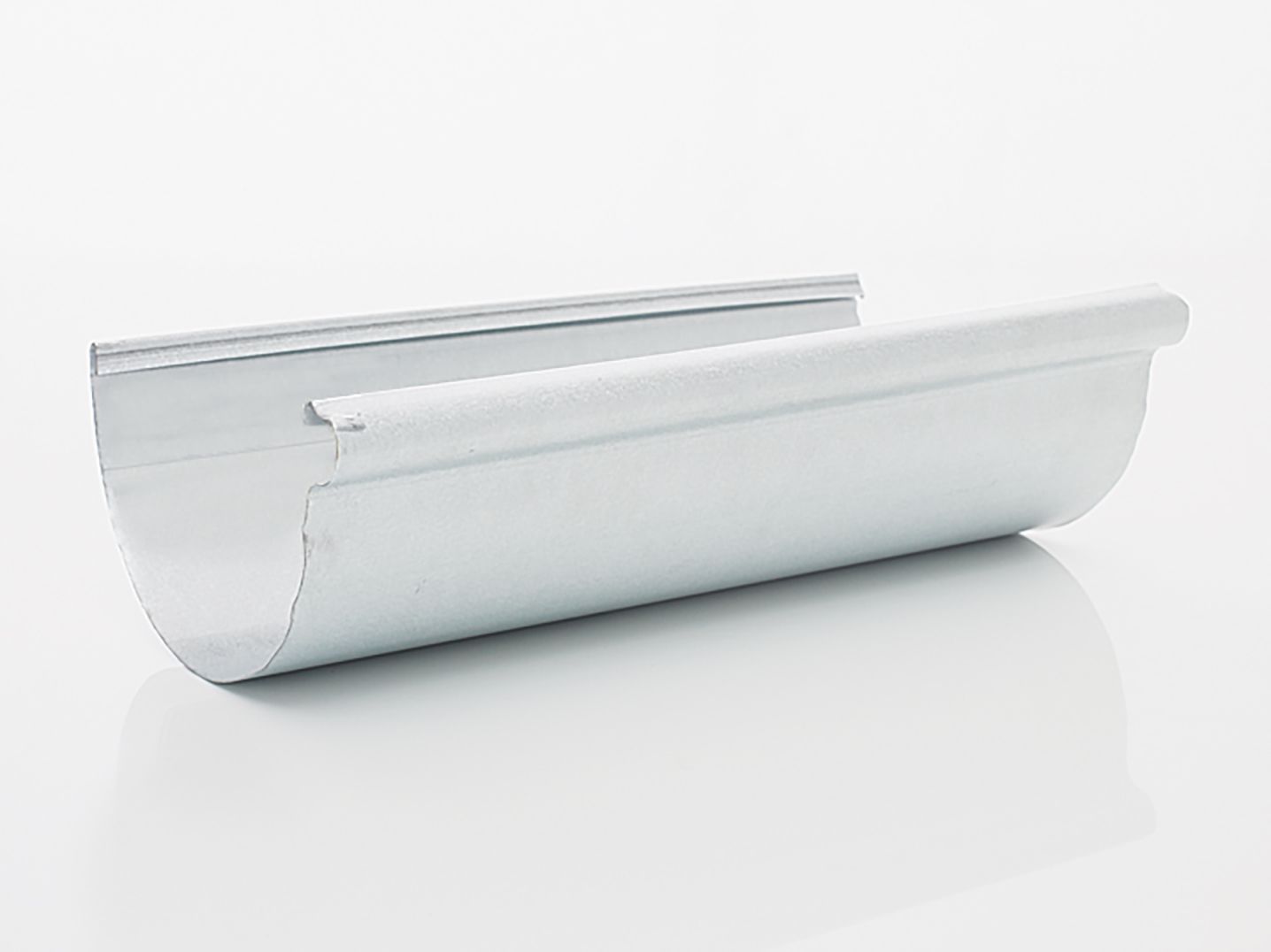 a white steel gutter" />
a white steel gutter" />
Steel gutters are known for their strength and durability, making them an excellent choice for homes in areas with extreme weather conditions. They’re less likely to crack or warp compared to other materials and can handle heavy loads of snow and ice. However, steel gutters are prone to rust over time if not properly maintained and can be heavier, making installation more challenging.
Cost: $16.78–$37.17 per foot
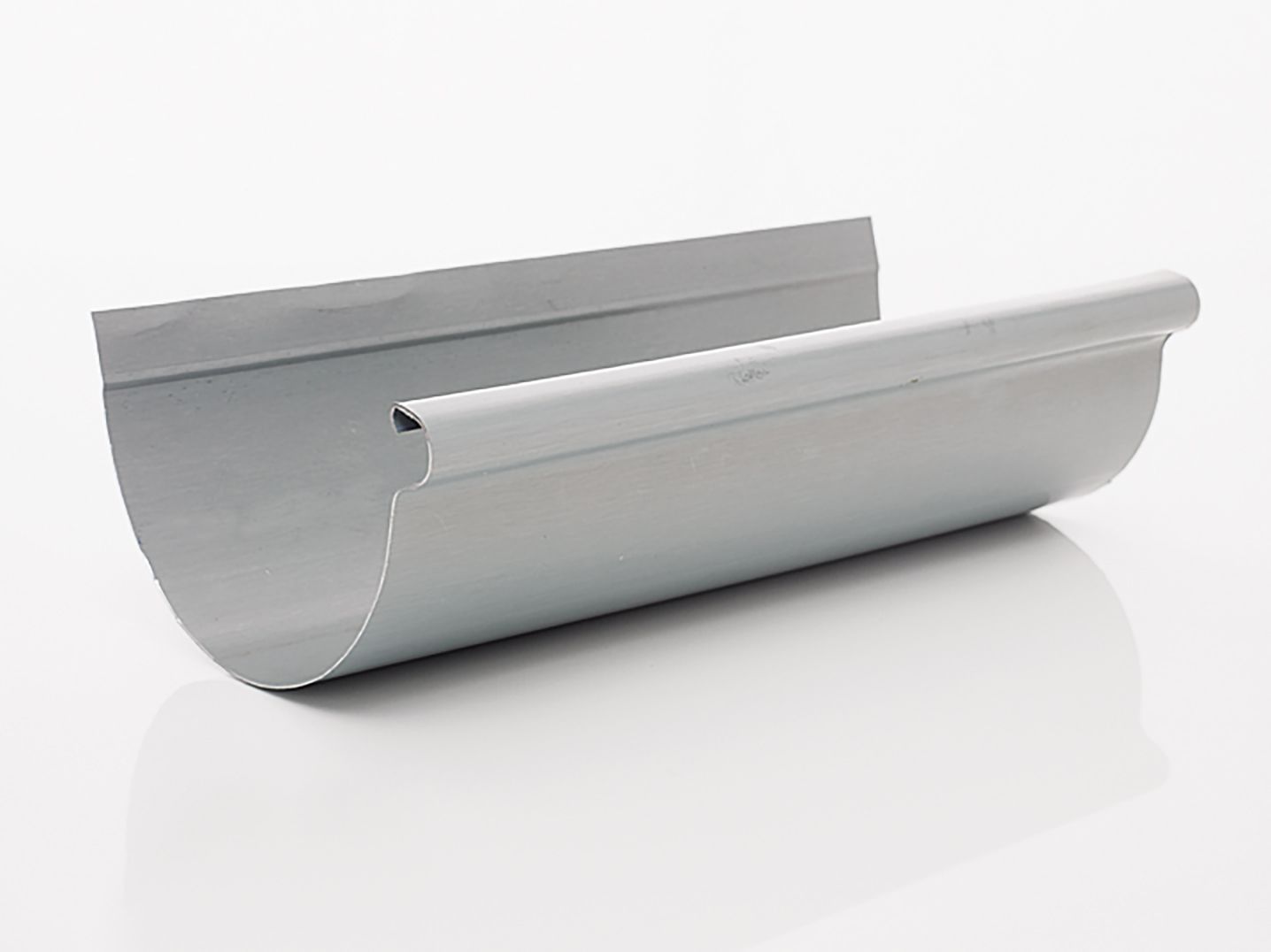
Zinc gutters are prized for their durability and low maintenance requirements. Over time, they develop a natural patina that protects against corrosion and gives them a distinctive, attractive appearance. However, they’re more expensive upfront compared to other materials and require professional installation due to their complexity.
Cost: $36.18–$61.84 per foot
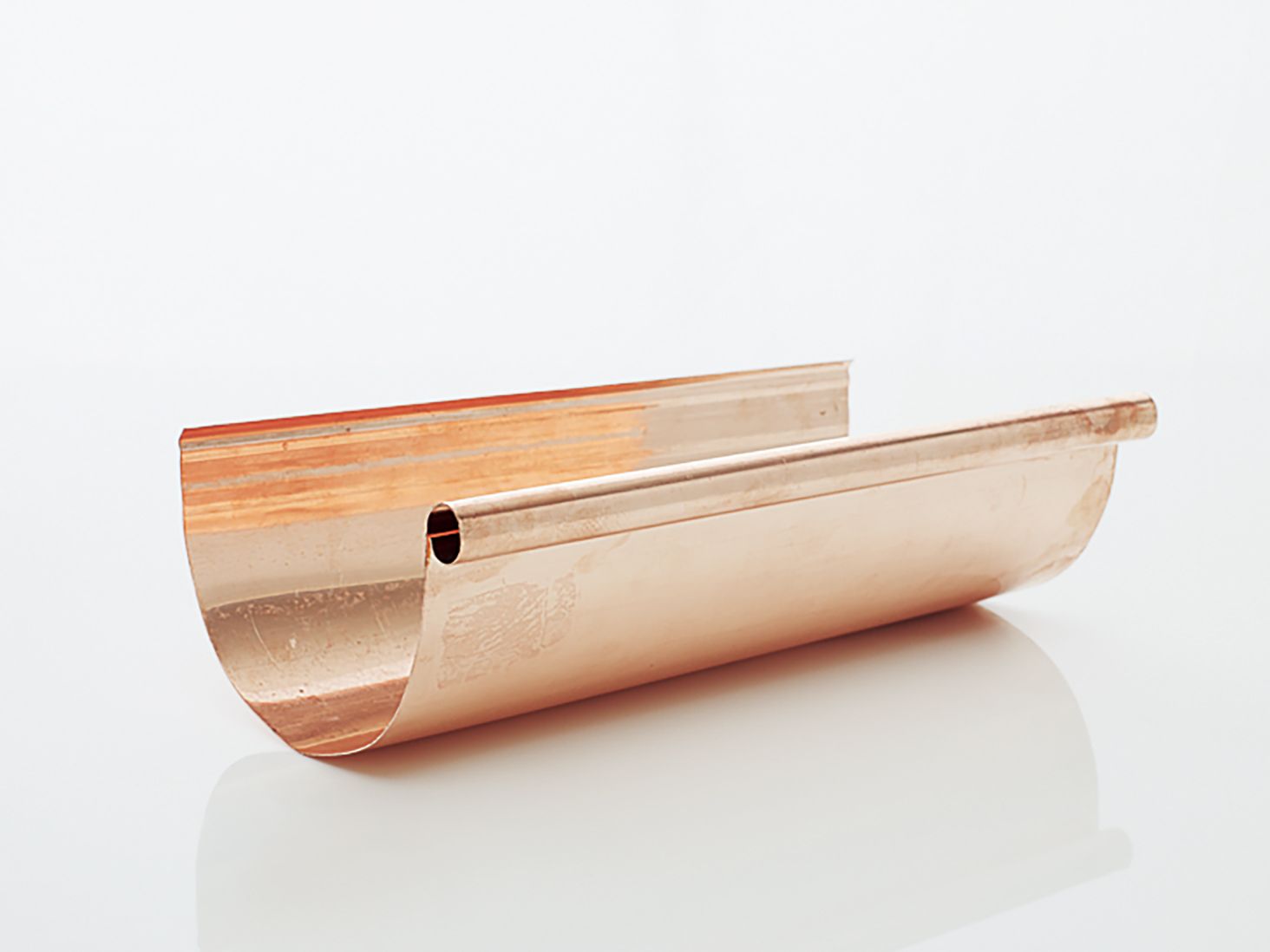
Copper gutters are highly regarded for their durability, aesthetic appeal, and long lifespan. They develop a beautiful patina over time, transitioning from a shiny, reddish-brown to a distinctive green hue. Copper gutters can last over 50 years with proper maintenance, making them a long-term investment. However, they’re among the most expensive gutter materials and require professional installation due to their weight and the need for specialized tools and techniques.
Cost: $29.85–$51.52 per foot
The second big decision to make is the shape of your new gutters. Half-round and K-style gutters are the two most popular types on residential buildings, and most materials should be available in these two styles.
This semicircular trough with its curled front lip or bead is a natural fit on traditional homes. In fact, if you have a historic home, you may be required to install these gutters. Half-round gutters go best with round downspouts, which drain water more efficiently than rectangular ones.
Half-round gutters most commonly come in 5- and 6-inch widths, but you can also find 7-, and 8-inch widths. Their curved sidewalls allow half-rounds to drain more thoroughly than K-style, making them useful in climates that experience heavy rainfall. The drawback to this style is it tends to be more expensive and difficult to install, since the shape requires supporting brackets to be installed along the fascia.
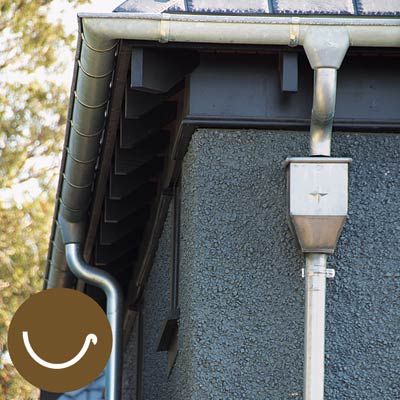
This is the most common gutter shape. It has a flat bottom and a profiled face that resembles crown molding. The flat surface can be installed directly against a house’s fascia without brackets. K-style gutters are often fitted with rectangular downspouts.
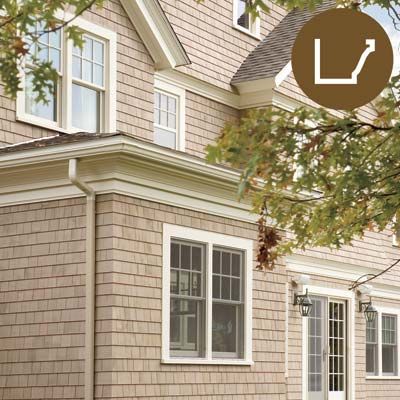
Again, these gutters are most commonly available in 5- and 6-inch widths, but 7- and 8-inch widths may also be available. K-styles can handle more than twice the runoff of a half-round of the same width, but they move the water more slowly. Their shape also makes them more difficult to clean, since debris can get stuck in the sharp angles.
Once you’ve got your material and shape picked out, there are a few more decisions to make.
Traditional gutters of all materials and styles come in prefabricated lengths and cut to fit the dimensions of your home. This means they necessarily include seams that have to be sealed or soldered shut, and when gutters crack or leak, they tend to fail at the seams.
A newer alternative to this is a seamless gutter system. These systems are customized out of the material of your choice—vinyl or metal—to your home’s exact dimensions and extruded from a single piece of that material, without seams. There are no joints to seal or visible seams, and over time, seamless gutters are less likely to leak, making them easier to maintain.
The tradeoff is cost. Seamless gutter installation must be done by a professional, and it is substantially more expensive. Additionally, if repairs are needed, the entire length of gutter will need to be replaced.
Over time, all gutters will gather debris like dirt, leaves, twigs, pine needles, and other refuse. This slows water flow and eventually leads to clogging. Debris guards can reduce this clogging. Keep in mind that no debris filter is perfect—you’ll still have to clean your gutters periodically, no matter what the manufacturer promises. Many of these guards can actually make cleaning more difficult, since they will need to be removed and replaced every time.
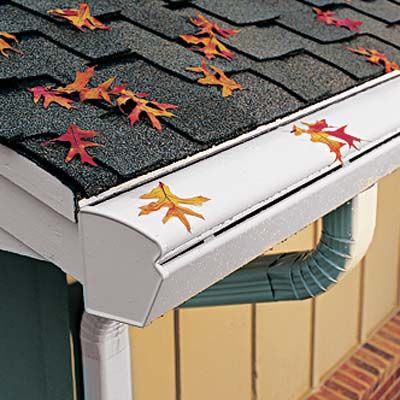
The following products aren’t necessary for every gutter system, but they can provide functionality and flair, adding to your home’s curb appeal.
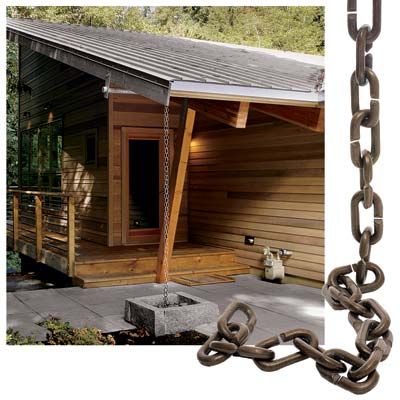
Replacing a traditional downspout, a rain chain leads water from the gutter directly to the ground, without any clog-prone elbows. They’re typically anchored to a gravel dry well, and they can be decorative or rustic to fit your style. They work best for houses with deep overhangs, as chains tend to splash during downpours.
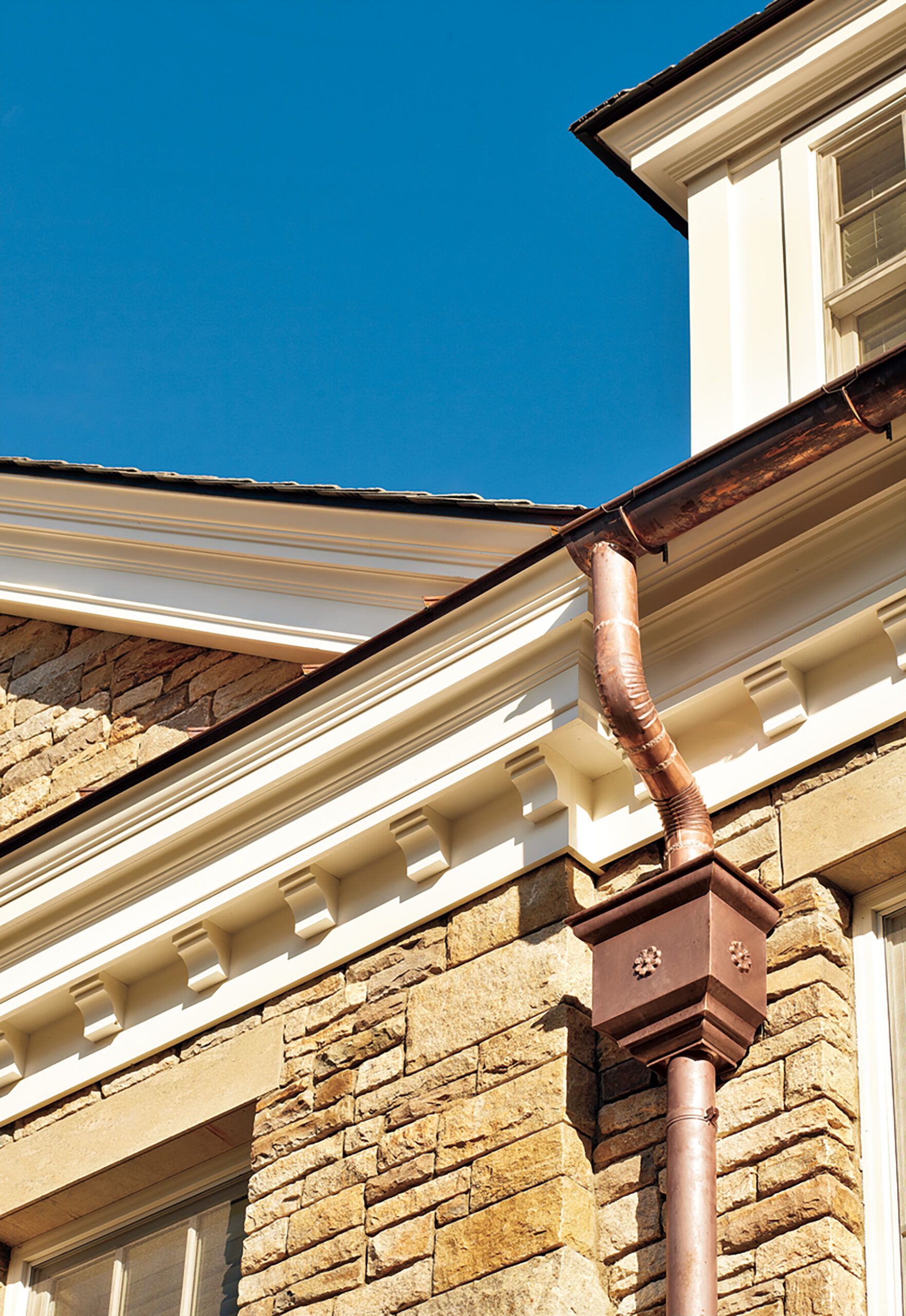
Also called a leader or collector head, a conductor head is installed on the downspout, usually near the roof eave. It gives the downspout extra time to drain in a downpour or consolidate runoff from multiple gutters. Conductor heads also add a bit of visual appeal to a highly visible part of a gutter system.
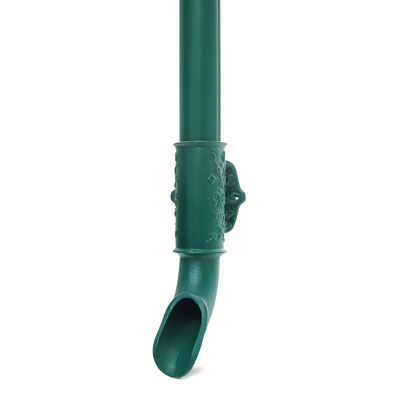
Fitted to the bottom of a downspout, a decorative boot provides a classy and rugged exit point for water.
Gutters attach to the eaves in one of two ways: to the fascia (the boards that cover rafter ends) or the roof. Fascia-hung gutters are sturdier and more secure, but if the fascia is nonexistent or covered with crown molding, roof mounting may be your only choice.
In this method, an external bracket cradles the gutter trough from underneath, so it’s open and easy to clean. To properly support the gutter, place a bracket every 32 inches, or every 24 inches in snow country.
Hangers cross over the open top of the gutter to support the far edge. They bridge the interior of the gutter, largely hidden from view, but they interfere with cleaning. Hangers with built-in screws hold better than spikes and don’t mar gutter faces.
If your fascia are angled, you’ll need to use hardware that adjusts for this so that the gutters hang correctly. Wedge inserts like these level gutters front to back. The T-wedge (shown) works best with fascia hangers. For fascia brackets, use solid wedges, like those from Classic Gutter Systems LLC.
We only recommend using roof hangers as a last resort. In areas with severe winds or winters, choose hangers with rods, which are stronger than flat straps.
A new gutter system will last anywhere from a few years to the lifetime of your house, depending on the material you choose and how well they’re installed and maintained.
If trees tower over them, gutters need periodic cleaning, even when fitted with gutter guards. Pine needles are especially notorious for causing clogs. Gutters should typically be cleaned about twice a year, though this will depend on the amount of debris that tends to accumulate.
One way or another, debris will find its way into your gutters, and someone—you or a gutter service—will have to climb a ladder and clean them out. You should also take this opportunity to inspect the gutters for leaks, cracks, or loosened connections. Here are some basic tricks of the trade to make the job easier.
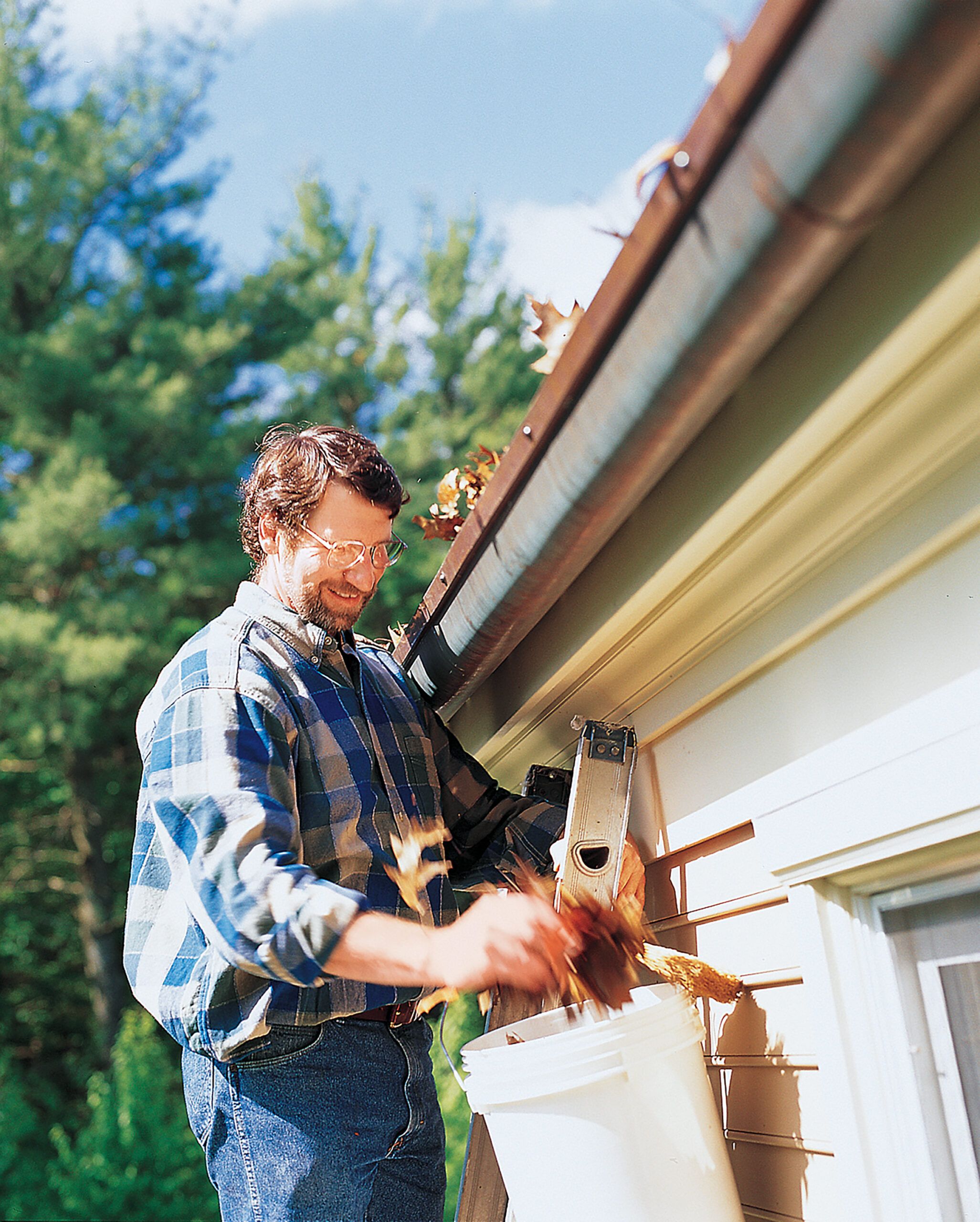
Choosing between installing gutters yourself or hiring a professional depends on your skills, time, and budget. If you’re good at home improvement projects and have the right tools, doing it yourself can save you money. DIY installation means you won’t have to pay for labor, which can be expensive. However, it’s important to be honest about your abilities. Working on a ladder and making sure everything is sealed properly can be tricky.
Hiring a professional is often the better choice if you want to make sure the job is done right. Pros have the experience and tools to handle different types of gutters and rooflines. They can spot problems like damaged fascia or incorrect slopes that you might miss. Although hiring a professional costs more upfront, it can save you time and prevent mistakes that could be costly to fix later. Plus, many pros offer a warranty on their work, giving you peace of mind.
If your house is large, has multiple stories, or you’re not comfortable with DIY projects, hiring a professional is the best option. It ensures the gutters are installed correctly and safely. But if you have a one-story home, feel confident in your DIY skills, and want to save money, doing it yourself can be a rewarding project. Just make sure to weigh your options carefully and consider the potential risks and benefits.
Gutters are essential to protect your home and foundation from water damage. Depending on your budget and preferences, you can opt for an unobtrusive, practical system or add a bit of decoration or luxury. Vinyl and aluminum gutter installation on a one-story home can be a project for an experienced DIYer, but we strongly recommend hiring professional gutter installers for multistory homes and other types of metal gutters.
Looking for help with home repairs? A home warranty may help. Check out these in-depth guides from the This Old House Reviews Team: